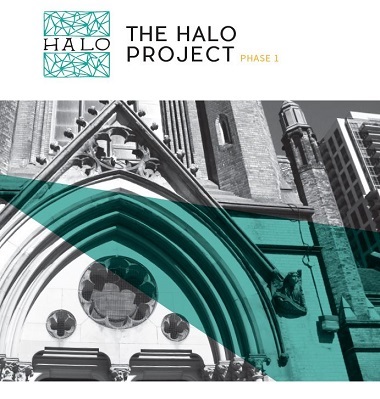 This comment first appeared in the April issue of the Tamarack Institute’s online magazine Engage! The Tamarack Institute highlights research and stories which encourage community change and help to end poverty.
This comment first appeared in the April issue of the Tamarack Institute’s online magazine Engage! The Tamarack Institute highlights research and stories which encourage community change and help to end poverty.
One of the significant challenges that community development faces today is understanding how, and in what ways, our work makes a difference. As individuals, we may labour diligently for a long time with what can feel like very little to show.
Organizations have a similar challenge. Time, money, staff and volunteers pour out their creativity and passion toward some common end but the value of all that work is often not seen and we can struggle to justify to funders what all the effort is leading to.
The Halo Project
The Halo Project is an attempt to try and determine just how all of that work adds up in terms of contributions to the common good. This ‘determining’ is about measurement – putting some quantity around common goods that are difficult to define.
Pioneering work done by Ram Cnaan in 2010 at the University of Pennsylvania attempted to put a value on the work of ordinary, local congregations in Philadelphia. Following a hunch, Dr. Cnaan and his team used established measurement tools developed to value things like hockey tournaments, conferences and other somewhat intangible functions in communities but turned them to a community organization not typically analyzed in economic terms.
Put another way, the question they were chasing was simply, “If this congregation disappeared tomorrow and we had to replace everything, including all of the social supports, programs, care and so on, what would that cost?”
The surprising discovery was that the full value of the work done by an ordinary neighbourhood congregation, even of modest size, is four to five times the value of their annual budget. That means their contribution to the common good, the social infrastructure of their communities, is strongly generative.
In years gone by, swamps were drained because it was thought that they ‘caused disease’ or ‘produced deadly vapours.’ Today we know that a great deal of value is provided by those swamps. Similarly, in our ignorance, we may consider the loss of congregations as a natural side-effect of advancing civilization. However, like the swamps, we are learning how critical social groups like congregations are to thriving communities.
Tested in Toronto
To test the validity of the earlier work, The Halo Project was organized and used the Ram Cnaan framework in a Canadian urban setting. The results in Toronto reflected a dynamic that is similar to the one seen in the Philadelphia study. Ten local congregations together generated common goods valued at an astounding $45 million per year. It turns out that local congregations are powerful producers of social goods that extend far beyond their local members.
Halo Calculator
Work is now underway to develop the Halo Calculator app that is expected to be available by the summer of 2017. The app will allow users to measure the halo effect of their own faith-based organization. A report summarizing the research method, specifics about each congregation and the measures used to produce the valuation are available at the link below.
While a great deal more work remains to be done, the early signs suggest that learning more about this dynamic will yield further insights that could be applied to other community organizations, arts groups and similar social institutions that often provide so much unseen good in our communities.
Learn More:
- Visit The Halo Project website
- Learn more about Milton Friesen of the Cardus Institute
- Email here to be notified when The Halo Calculator is available to help your faith-based organization calculate its social good
Milton Friesen is a member of the think tank Cardus and is considered one of Canada’s leading thinkers in the area of social capital and its impact on neighbourhood development. Some of his project work has included creative team leadership, undergraduate teaching, marketing communications, editing, writing, interviewing, political campaign development, web strategies and content development.
This article is re-posted by permission from the Tamarack Institute.

